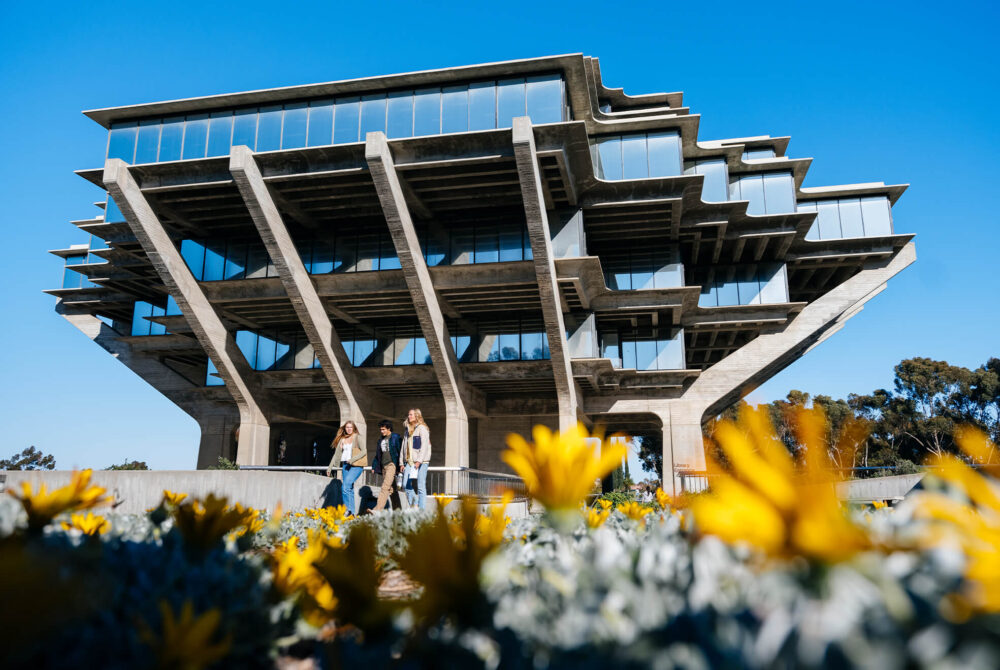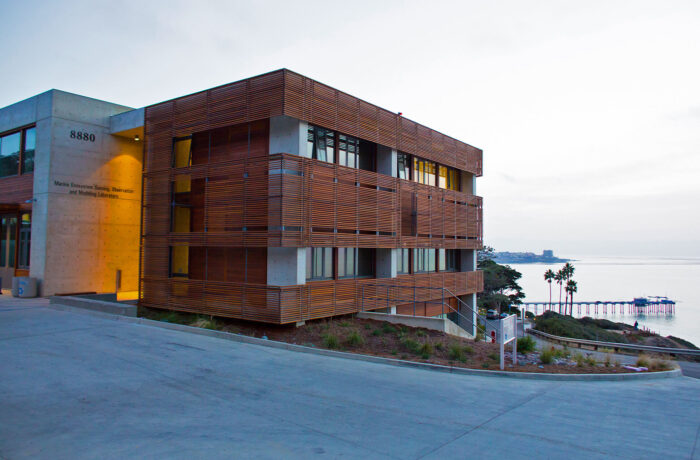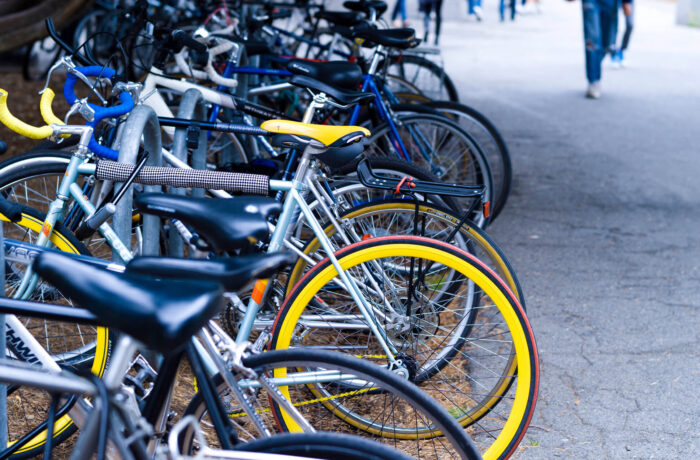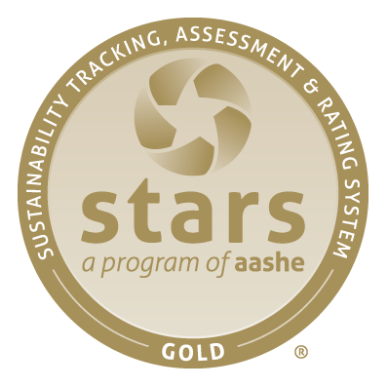Educating the community on its various energy, climate and sustainability projects and initiatives, UC San Diego hosted five virtual Sustainability Town Halls on a broad range of topics, including strategic energy, hydrogen energy, water, zero waste, sustainable landscapes and green building.
The campus continued to lead in sustainable design and construction. Senior Director Walt Kanzler was named a LEED fellow, joining the ranks of fewer than 300 LEED fellows around the world. North Torrey Pines Living and Learning Neighborhood received multiple design awards, such as the Platinum Level Touchstone Award by The Center for Health Design and recognition as ASID Outcome of Design Award Winner and Optimizer and Fast Company Honoree for its 2022 Innovation by Design Awards under the Best Educational Design of 2022. North Torrey Pines Living and Learning and the Marine Conservations and Technology Facility received Platinum and Silver LEED ratings, respectively.
Read More about Sustainability at UC San Diego
University Centers launched an educational campaign, Meatless Monday, in the winter 2023 to guide community members in choosing more sustainable food options. Then in spring, it hosted the cherished tradition called the Sustainable Food Expo. After having taken a hiatus during the pandemic, its return set a record high in attendance.

CLIMATE PROTECTION – EMISSIONS
* Interim goals for 2030, 2035 and 2040 to be developed through fossil-free planning that is underway at each location
** 90% direct reduction of total emissions from 2019 levels with residual emissions negated by carbon removal
UC San Diego’s overall emissions increased by 6%. In the prior year, unplanned gas turbine outages reduced scope 1 emissions. The campus returned to normal cogeneration operations in fiscal year 2022–23.
ENERGY – RENEWABLE energy use
ENERGY USE INTENSITY (EUI)
UC San Diego saw an increase in its EUI in 2022.
FOOD
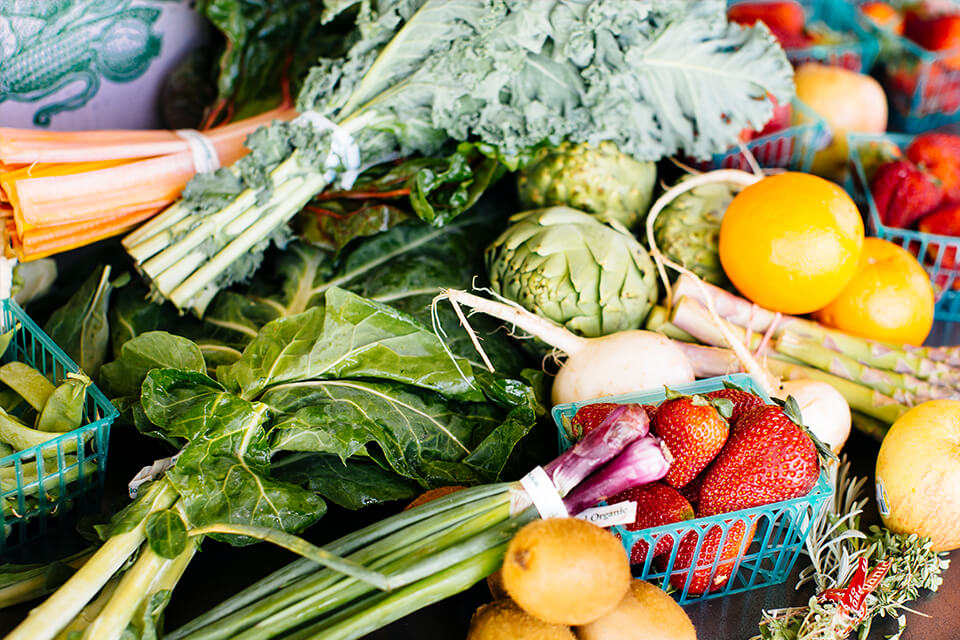
of food and beverage purchases met sustainability criteria ($4.2M)
of food and beverage purchases were plant-based ($5.3M)
UC San Diego’s sustainable food spend was affected by the loss of a major local bread supplier.
Green building
UC San Diego continues to excel in sustainable design and construction, adding seven Platinum projects, one Silver project and one certified project this year. North Torrey Pines Living and Learning Neighborhood garnered several design awards.
11 Platinum, 28 Gold, 15 Silver and 4 Certified
Total number of LEED certifications
procurement

green spend on electronics (49%)
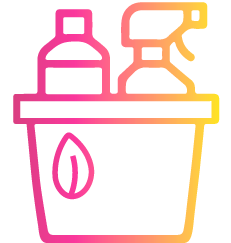
green spend on cleaning supplies (48%)

green spend on indoor office furniture (95%)

green spend on office supplies (41%)
The University reports on green spend, as defined in the Sustainable Procurement Guidelines, and reached out to suppliers for spend data in four product categories for this year’s report.
Green spend is defined as meeting preferred or minimum criteria in UC’s Sustainable Procurement Guidelines.
Suppliers reporting: Electronics (5), Furniture (3), Cleaning supplies (5), Office supplies (4).
UC Systemwide Spend Analytics category data provided by CalUSource.
Sustainable Building & Laboratory Operations
UC San Diego added four more certified green labs this year and continues to lead UC in total labs certified.
total assessed green laboratories
Transportation
of students and employees are utilizing alternative commuting methods
EV charging ports
of all vehicles acquired in 2023 were electric (zero-emission), plug-in hybrid or clean transportation fuel
Telecommuting continued to positively impact emissions, along with the use of multi-occupant vehicles. Alternative commuting increased by approximately 30% from the pre-pandemic 2019 level.
WATER
*Based on a 3-year average of fiscal years 2005-08
**2025 goal is a 36% reduction from baseline
Includes UCSD Health La Jolla Medical Center
Potable water use per capita rose due to increased potable water use in cooling towers this fiscal year.
ZERO WASTE – GENERATion
*These numbers might include a small amount of incineration that is being phased out.
**In 2021, waste generation per weighted campus user spiked due to pandemic-related closures as base-level operations continued but the number of users on campus decreased.
UC San Diego’s Return to Learn programming saw an increase in activity on campus that impacted waste generation in both recycling and landfill quantities.
ZERO WASTE – DIVERsion
*Waste incineration was counted as diversion prior to July 2022.
UC San Diego increased its recycling and reuse quantities which resulted in a waste diversion increase of 5% from the previous year.
Awards
Neighborhood Torrey Pines Living and Learning Neighborhood received the American Institute of Architects COTE Top Ten award for sustainable design excellence and the American Society of Interior Designers Outcome of Design award, and was a Fast Company honoree for its 2022 Innovation by Design awards under the Best Educational Design category.
A full list of awards is featured on the UC Office of the President’s website.
 Sustainability Annual Report 2023
Sustainability Annual Report 2023